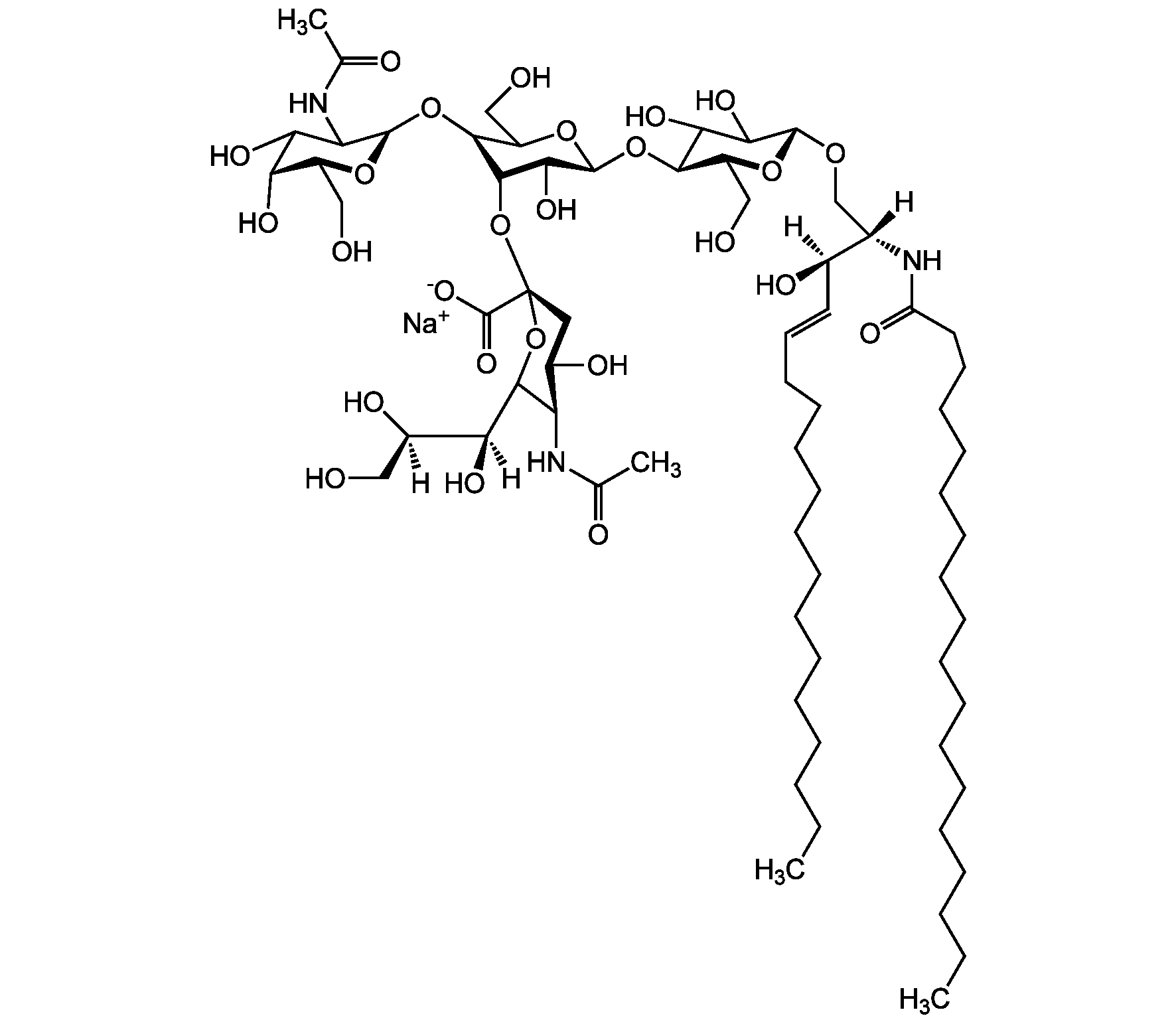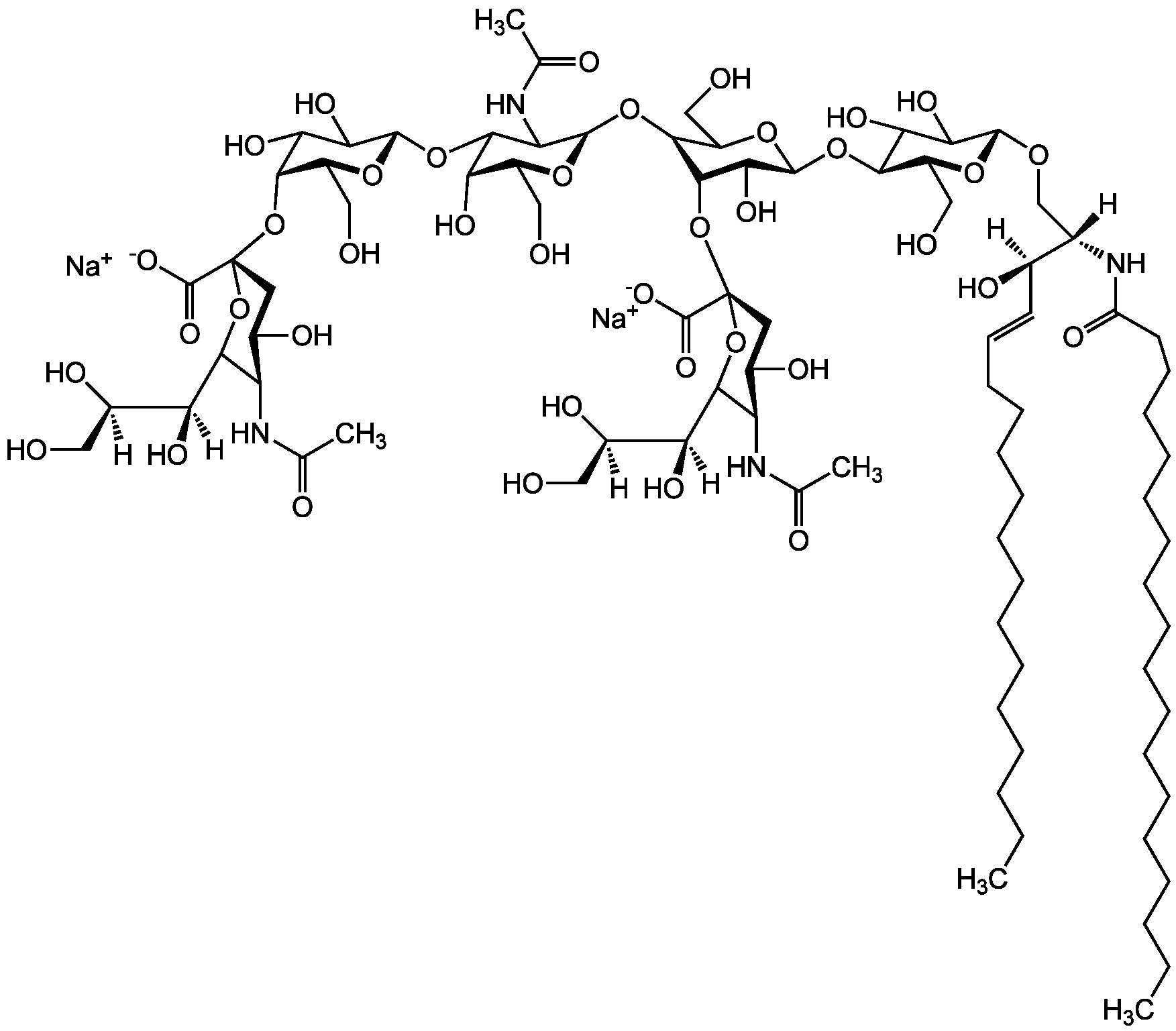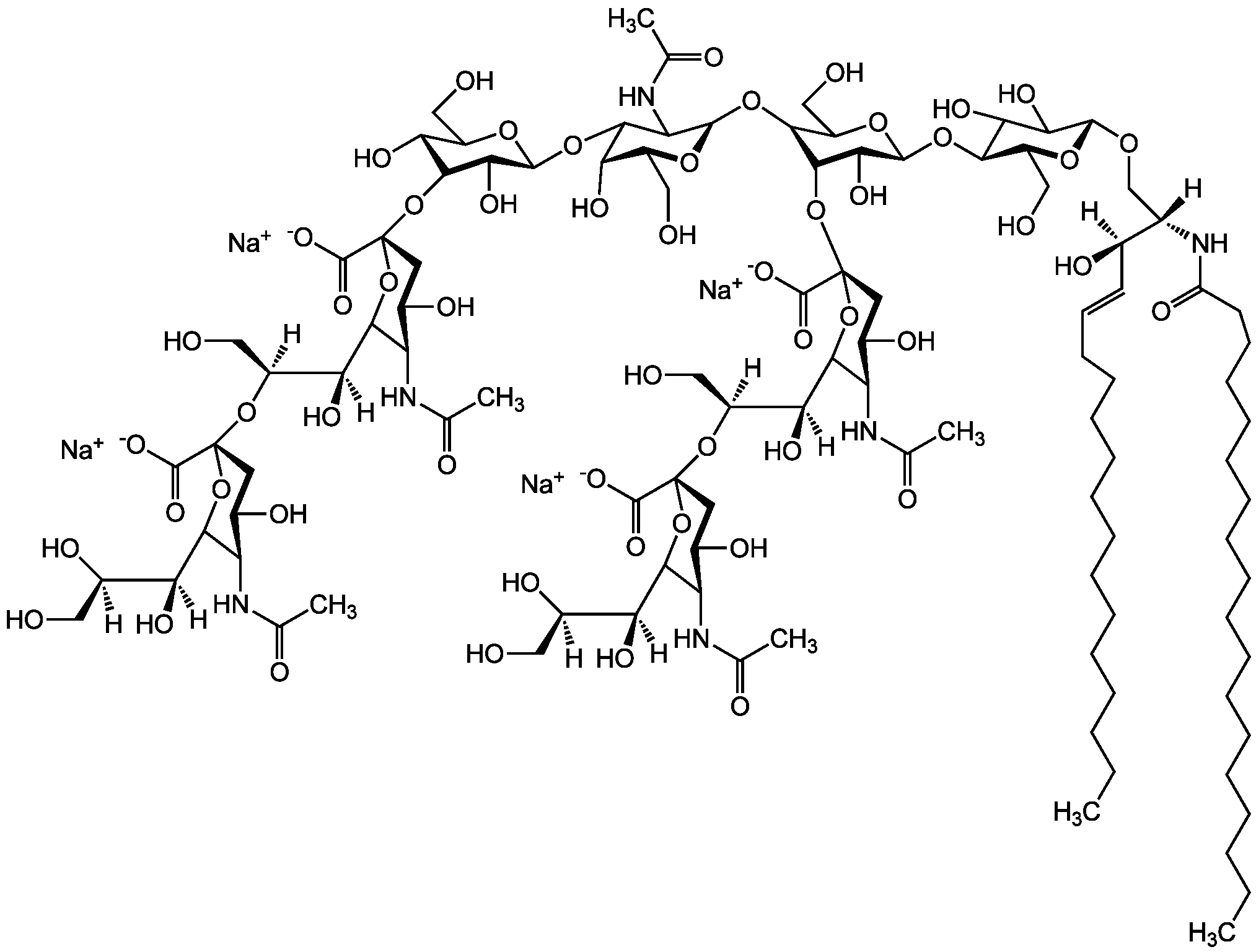
Chemical Structure
Ganglioside GD3 . disodium salt (bovine brain)
AG-CN2-9005
CAS Number62010-37-1
Product group Chemicals
Estimated Purity>98%
Molecular Weight1470.8 . 46.0 (calculated on sphingosine C18:1 and stearic acid)
Overview
- SupplierAdipoGen Life Sciences
- Product NameGanglioside GD3 . disodium salt (bovine brain)
- Delivery Days Customer10
- CAS Number62010-37-1
- CertificationResearch Use Only
- Estimated Purity>98%
- Molecular FormulaC70H123N3O29 . 2Na
- Molecular Weight1470.8 . 46.0 (calculated on sphingosine C18:1 and stearic acid)
- Scientific DescriptionChemical. CAS: 62010-37-1. Formula: C70H123N3O29 . 2Na. MW: 1470.8 . 46.0 (calculated on sphingosine C18:1 and stearic acid). Isolated from bovine brain. Gangliosides are acidic glycosphingolipids that form lipid rafts in the outer leaflet of the cell plasma membrane, especially in neuronal cells in the central nervous system. They participate in cellular proliferation, differentiation, adhesion, signal transduction, cell-to-cell interactions, tumorigenesis and metastasis. The accumulation of gangliosides has been linked to several diseases. Ganglioside GD3 induces mitochondrial permeability transition (MPT) without requiring elevated Ca2+ levels and thus triggers Fas-mediated apoptosis. It modulates the activity of Src-family tyrosine kinase Lyn and cell apoptosis. It is involved in several tumor processes and is high abundant in proliferating cells and in the first stage of neuronal differentiation. - Gangliosides are acidic glycosphingolipids that form lipid rafts in the outer leaflet of the cell plasma membrane, especially in neuronal cells in the central nervous system. They participate in cellular proliferation, differentiation, adhesion, signal transduction, cell-to-cell interactions, tumorigenesis and metastasis. The accumulation of gangliosides has been linked to several diseases. Ganglioside GD3 induces mitochondrial permeability transition (MPT) without requiring elevated Ca2+ levels and thus triggers Fas-mediated apoptosis. It modulates the activity of Src-family tyrosine kinase Lyn and cell apoptosis. It is involved in several tumor processes and is high abundant in proliferating cells and in the first stage of neuronal differentiation.
- SMILES[Na+].[Na+].[H][C@@](O)(CO)[C@]([H])(O)C1O[C@@](CC(O)[C@H]1NC(C)=O)(O[C@@]([H])(CO)[C@]([H])(O)C1O[C@@](CC(O)[C@H]1NC(C)=O)(O[C@H]1[C@H](O)C(CO)O[C@@H](O[C@H]2C(O)C(O)[C@H](OC[C@]([H])(NC(=O)CCCCCCCCCCCCCCCCC)[C@]([H])(O)\C=C\CCCCCCCCCCCCC)O[C@H]2CO)C1O)C([O-])=O)C([O-])=O
- Storage Instruction-20°C,2°C to 8°C
- UNSPSC12352200

![Ganglioside GD3 Mixture (sodium salt) [62010-37-1]](https://www.targetmol.com/group3/M00/02/88/CgoaEWY7MIaEHp7kAAAAAKD_jGs608.png)






